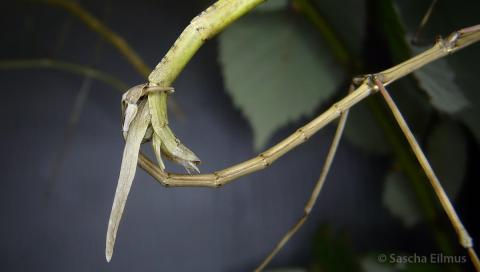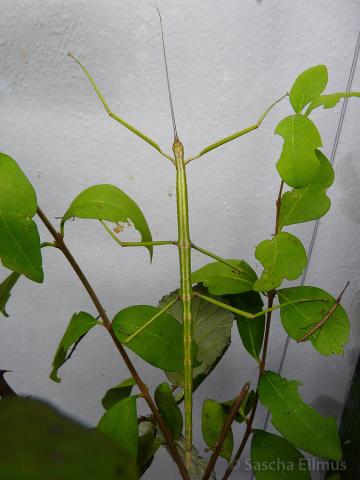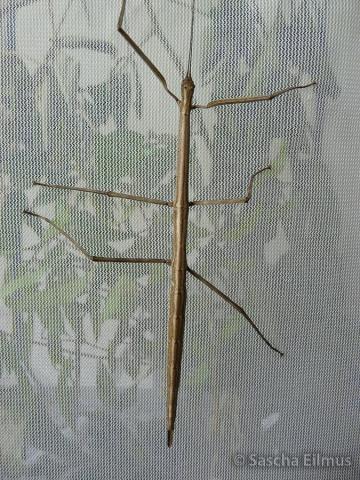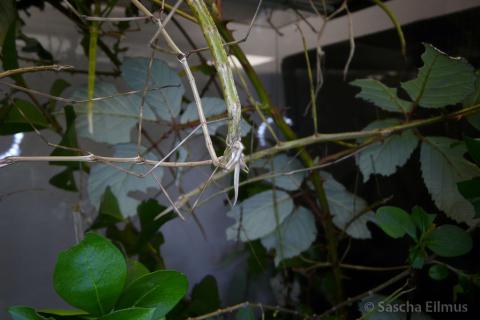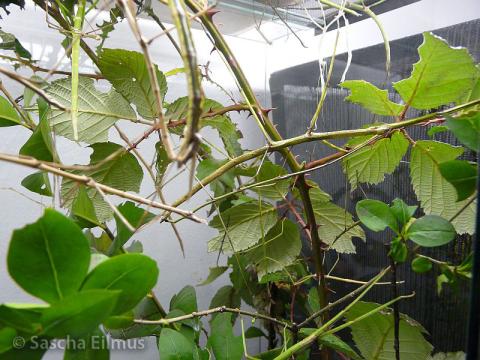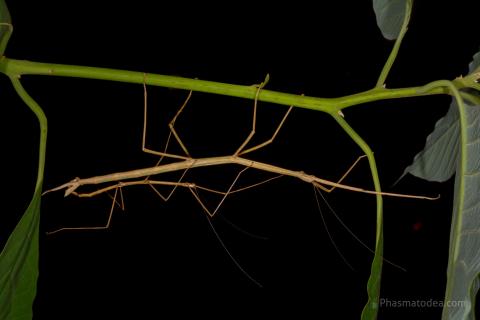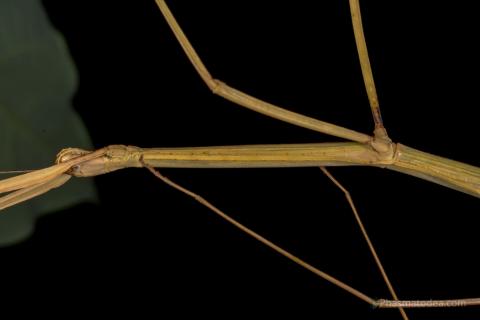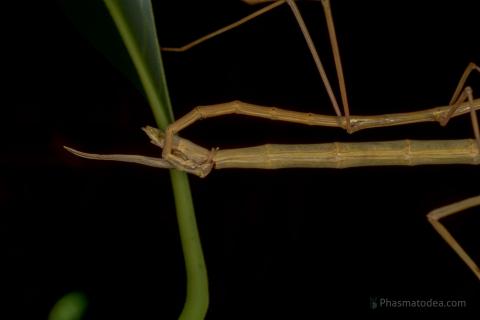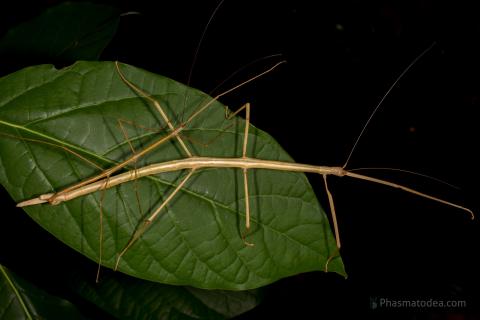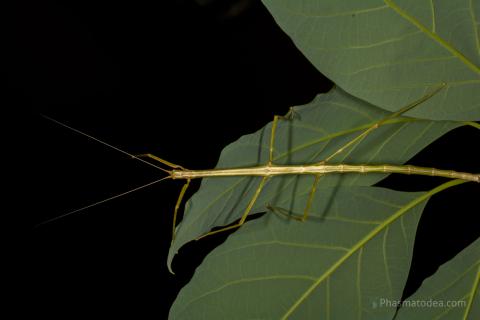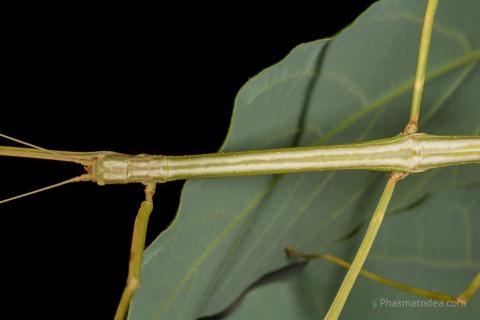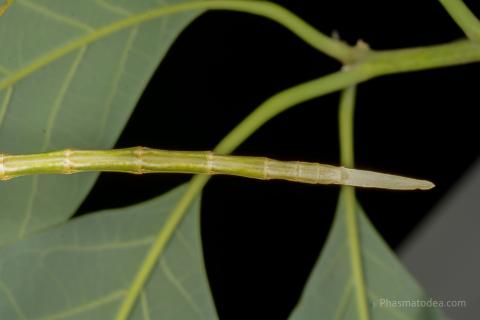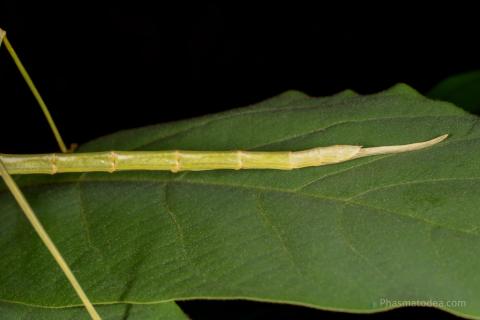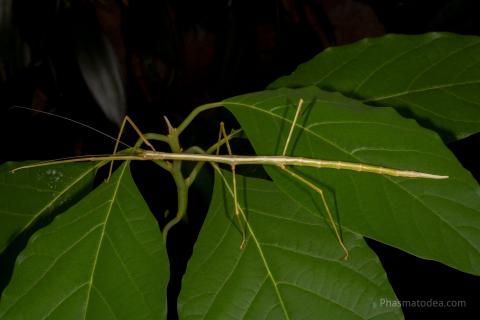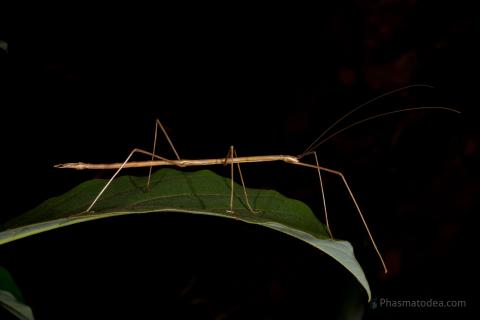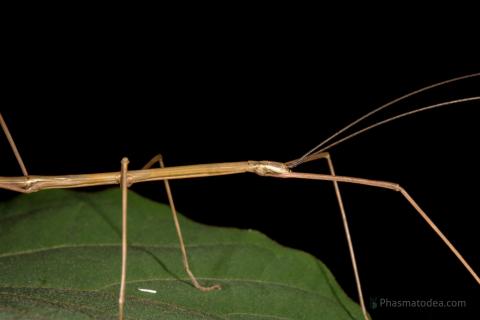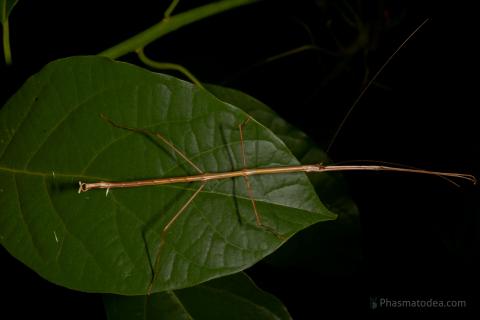
Genus
Species
Stock
CLP
597
PSG
52a
Culture status
Unknown
Foodplants
Bramble (Rubus spp.)
Privet (Ligustrum spp.)
Hazel (Corylus avellana)
Oak (Quercus robur)
Rose (Rosa spp.)
Raspberry (Rubus idaeus)
Firethorn (Pyracantha)
Breeding notes
(by Bruno Kneubuehler)
General Notes
- Hausleithner (1987) described this species first as Calynda brocki
_________________
Culture History
- Stock 1: Costa Rica, imported by a reasearch worker in the early 1980's
- Stock 2: Costa Rica, imported by an unknown person as "Calynda sp." in 2005
- Stock 3: Costa Rica, Santa Elena, Monteverde
_________________
Origin
- Santa Elena, Monteverde, Costa Rica
_________________
Females
- brown, bright green or dirty green, not winged phasmids
- the size of the F1 generation varied from 14 to 16 cm. Females in the wild only reached 12 cm to 13 cm
- two parallel bright stripes on the back
- 2 blunt spines on the head
- typical long subgenital plate
_________________
Males
- also typical phasmids - about 8 to 10 cm long
- they are not winged
_________________
Behaviour
- Males as females can behave very hysteric and stagger around when being touched
- this makes is not so easy to change food plants. You should handle them carefully. But they do not tend to drop legs
_________________
Eggs
- beige, about 3 mm long
- incubate the eggs at room temperatures (18-25°C) on some humid substrate, e.g. vermiculite
- incubation time is about 3 - 4 months
_________________
Food Plants
- bramble (Rubus spp.)
is very well accepted by nymphs and adults - privet (Ligustrum spp.)
is very well accepted by nymphs and adults - hazel (Corylus avellana), oak (Quercus spp.), rose (Rosa spp.) and raspberry (Rubus idaeus) have been mention in the literature as alternative host plants
- In nature the females have been found feeding on plants of the families Melastomataceae and Asteraceae
- firethorn (Pyracantha) is well accepted (info by Pietro Missiaggia)
_________________
Breeding Notes
- an easy to breed, attractive and quit big species
- during the day, nymphs are usually on the leaves of the food plants, sometimes with their abdomen in a "zigzag" position
- keep nymphs in a normal terrarium (for increased humidity)
- move nymphs to a bigger cage according to their size as they grow up
- adults can be kept in quite an airy cage
- adult moult will happen after about 3 to 4 months at about 23°C
- females lay several eggs per day, which they just drop to the ground
- nymphs and adults have been sprayed with water 3 to 4 times a week
- for a successful development and moult the terrarium was filled with a thin layer of moist vermiculite on the cage floor. Note that the original habitat of this stock is a very wet tropical mountain cloud forest
_________________
References
- Phasmida Species Files (www.phasmida.orthoptera.org)
- Phasmatodea.com
- Schulten. 1995. Wandelnde Blätter, Stab- und Gespenstschrecken, (Calynda brocki)
- Seiler, C. & et al. 2000. Phasmiden Pflege und Zucht von Gespenstschrecken, Stabschrecken und Wandelnden Blattern im Terrarium, (Calynda brocki)
- Eilmus S, Dernbach A. and Strumo R: Costa Rica - ein Reisebericht und Beobachtungen zu bemerkenswerten Vertretern der Stab- und Gespenstschrecken (Phasmatodea). ZAG Phoenix, ISSN 2190-3476, Jahrgang 3, Nr. 2, 2012
